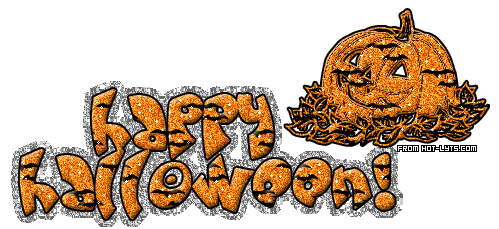History of Halloween, like any other festival's history is inspired through traditions that have transpired through ages from one generation to another. We follow them mostly as did our dads and grandpas. And as this process goes on, much of their originality get distorted with newer additions and alterations. It happens so gradually, spanning over so many ages, that we hardly come to know about these distortions. At one point of time it leaves us puzzled, with its multicolored faces.
Digging into its history helps sieve out the facts from the fantasies which caught us unaware. Yet, doubts still lurk deep in our soul, especially when the reality differs from what has taken a deep seated root into our beliefs. The history of Halloween Day, as culled from the net, is being depicted here in this light. This is to help out those who are interested in washing off the superficial hues to reach the core and know things as they truly are.
'Trick or treat' may be an innocent fun to relish on the Halloween Day. But just think about a bunch of frightening fantasies and the scary stories featuring ghosts, witches, monsters, evils, elves and animal sacrifices associated with it. They are no more innocent. Are these stories a myth or there is a blend of some reality? Come and plunge into the halloween history to unfurl yourself the age-old veil of mysticism draped around it.
Halloween's origins date back to the ancient Celtic festival of Samhain (pronounced sow-in).
The Celts, who lived 2,000 years ago in the area that is now Ireland, the United Kingdom, and northern France, celebrated their new year on November 1. This day marked the end of summer and the harvest and the beginning of the dark, cold winter, a time of year that was often associated with human death.
Celts believed that on the night before the new year, the boundary between the worlds of the living and the dead became blurred. On the night of October 31, they celebrated Samhain, when it was believed that the ghosts of the dead returned to earth. In addition to causing trouble and damaging crops, Celts thought that the presence of the otherworldly spirits made it easier for the Druids, or Celtic priests, to make predictions about the future. For a people entirely dependent on the volatile natural world, these prophecies were an important source of comfort and direction during the long, dark winter.
To commemorate the event, Druids built huge sacred bonfires, where the people gathered to burn crops and animals as sacrifices to the Celtic deities.
During the celebration, the Celts wore costumes, typically consisting of animal heads and skins, and attempted to tell each other's fortunes. When the celebration was over, they re-lit their hearth fires, which they had extinguished earlier that evening, from the sacred bonfire to help protect them during the coming winter.
By A.D. 43, Romans had conquered the majority of Celtic territory. In the course of the four hundred years that they ruled the Celtic lands, two festivals of Roman origin were combined with the traditional Celtic celebration of Samhain.
The first was Feralia, a day in late October when the Romans traditionally commemorated the passing of the dead. The second was a day to honor Pomona, the Roman goddess of fruit and trees. The symbol of Pomona is the apple and the incorporation of this celebration into Samhain probably explains the tradition of "bobbing" for apples that is practiced today on Halloween.
By the 800s, the influence of Christianity had spread into Celtic lands. In the seventh century, Pope Boniface IV designated November 1 All Saints' Day, a time to honor saints and martyrs. It is widely believed today that the pope was attempting to replace the Celtic festival of the dead with a related, but church-sanctioned holiday. The celebration was also called All-hallows or All-hallowmas (from Middle English Alholowmesse meaning All Saints' Day) and the night before it, the night of Samhain, began to be called All-hallows Eve and, eventually, Halloween. Even later, in A.D. 1000, the church would make November 2 All Souls' Day, a day to honor the dead. It was celebrated similarly to Samhain, with big bonfires, parades, and dressing up in costumes as saints, angels, and devils. Together, the three celebrations, the eve of All Saints', All Saints', and All Souls', were called Hallowmas.
Subscribe to:
Post Comments (Atom)


http://dirty-dancing-fairy.blogspot.com/2006/11/happy-halloween-2006.html?showComment=1163209560000#c116320961112712179'> 9:46 AM
very educational i must say, :)
cheers to that.